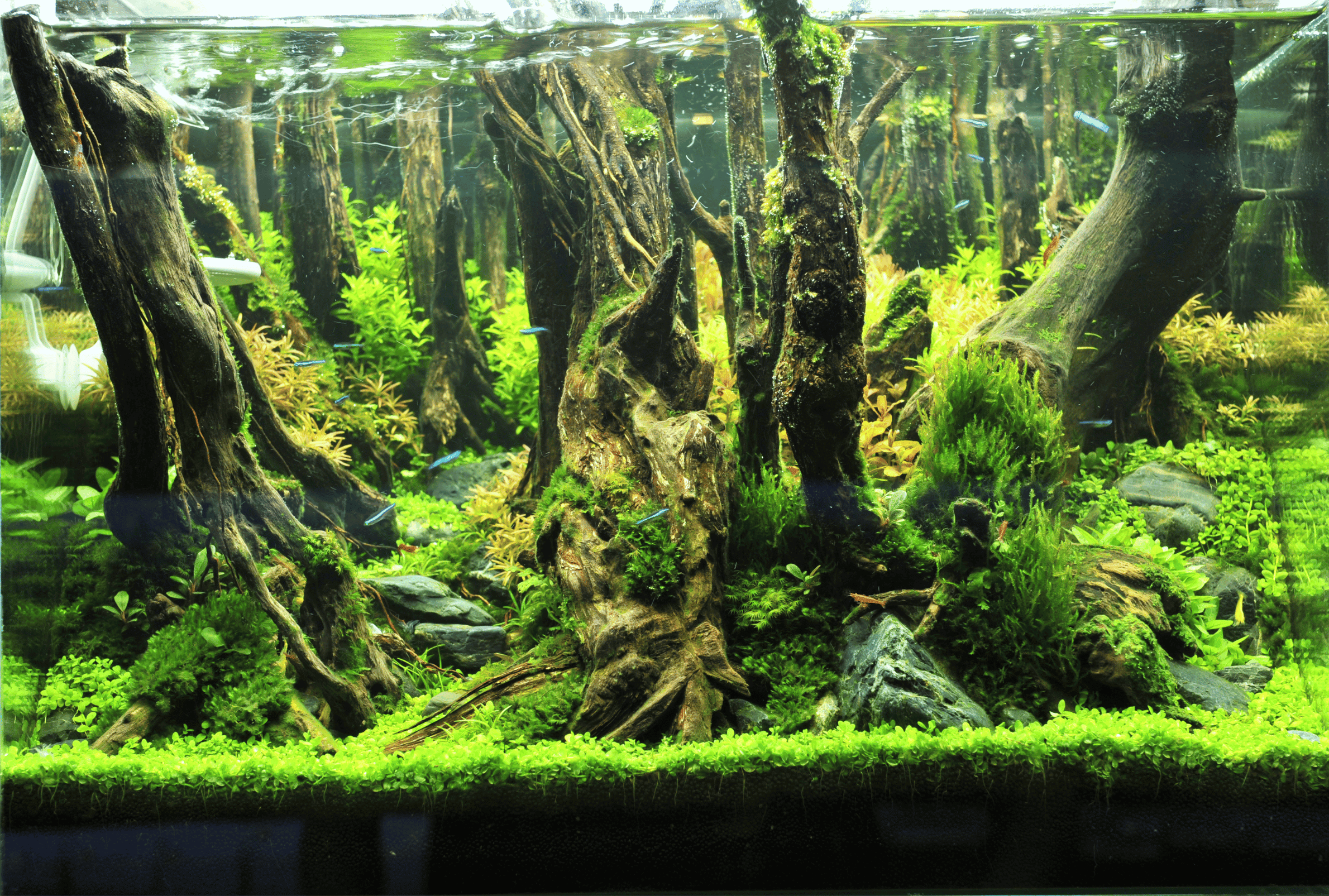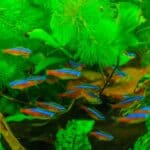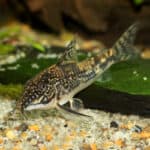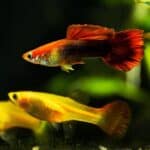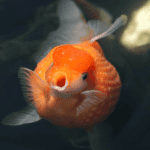Hey there! If you’re curious about the fantastic world of aquarium mosses, you’ve come to the right place. I’ve been a fan of these lush, green beauties for a long time, and they never cease to amaze me. Today, I’ll guide you through their exciting world, explaining why they are important, types of aquarium mosses, their care, and some cool tips and tricks. So let’s dive in, shall we?
Why are Aquarium Mosses Important?
Mosses, in general, bring some fabulous benefits to the table. However, when it comes to aquariums, these green gems offer even more than you might think.
- Natural Aesthetics: Mosses provide a vibrant and lush look that helps replicate the natural environment for your fish and other aquatic creatures.
- Shelter and Breeding Grounds: These plants offer hiding spots and breeding grounds for various species, promoting overall tank health and biodiversity.
- Water Quality: Mosses are like the natural filters of your aquarium. They absorb nitrates, contributing to cleaner water and a healthier environment for your aquatic friends.
Popular Types of Aquarium Mosses
There’s a vast range of moss types to choose from when setting up your aquarium. Here’s a quick look at some of the most popular ones.
- Java Moss (Taxiphyllum barbieri): Arguably the most common aquarium moss, it’s perfect for beginners due to its hardy nature and low-light requirements.
- Christmas Moss (Vesicularia montagnei): Named for its branching pattern, which looks like Christmas trees, this moss thrives in cooler temperatures.
- Flame Moss (Taxiphyllum ‘Flame’): This type grows vertically, resembling a flame, hence the name. It’s an excellent choice for creating vertical green elements in your tank.
- Weeping Moss (Vesicularia ferriei): Known for its cascading growth, weeping moss provides a stunning waterfall-like aesthetic.
- Marimo Moss Balls (Aegagropila linnaei): These are not technically moss, but algae formed into a spherical shape. They’re super easy to care for and add a unique touch to any aquarium.
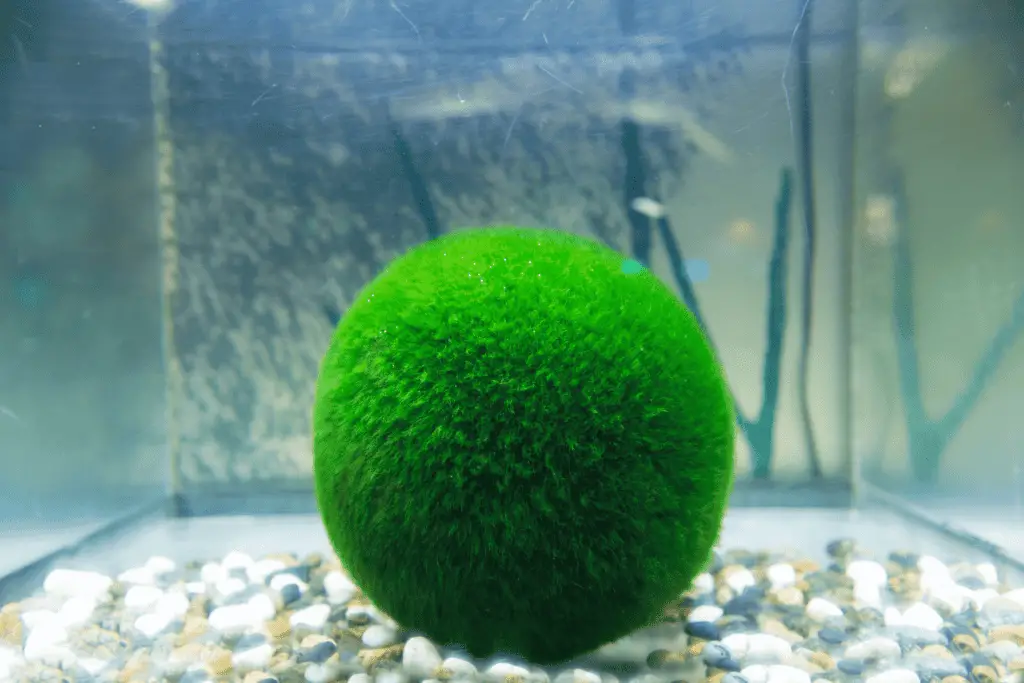
How to Care for Aquarium Mosses
Taking care of your aquarium moss isn’t rocket science, trust me. It’s all about creating a suitable environment and ensuring that their basic needs are met.
- Lighting: Generally, mosses prefer low to medium light. Too much light can lead to algae growth, which can suffocate your moss.
- Water Parameters: Most moss types prefer slightly acidic to neutral pH levels (6.0 – 7.0). They’re also tolerant to a wide range of water hardness.
- Nutrition: Mosses absorb nutrients through their leaves. You can add a liquid fertilizer to the water to ensure they get the necessary nutrients.
- Temperature: The optimal temperature varies among moss types. Generally, a range of 70°F – 77°F works well for most species.
Pro Tips for Thriving Aquarium Mosses
Now that we’ve covered the basics, here are a few insider tips that can take your moss growth to the next level.
- Pruning: Regularly trim your moss to encourage denser growth. It also helps maintain the overall aesthetics of your tank.
- Avoid Overcrowding: Give your moss enough space to grow. Overcrowding can lead to competition for resources, affecting their health.
- CO2 Supplementation: Although not essential, supplementing with CO2 can promote faster and more vibrant growth. But remember, balance is key. Too much CO2 can harm your aquatic life.
Best Mosses for Beginners
For those just dipping their toes into the world of aquarium mosses, here are some types that are especially forgiving for beginners.
- Java Moss: This moss is extremely hardy and adapts to a variety of conditions, making it an excellent choice for beginners.
- Marimo Moss Balls: These aren’t technically mosses but still make a fantastic addition to any aquarium. They’re simple to care for and can survive in a variety of environments.
- Flame Moss: This moss’s vertical growth pattern is easy to manage, and it doesn’t require much light, making it an excellent choice for those new to aquarium plants.
Common Problems with Aquarium Mosses
Just like any other plants, mosses can also face some challenges. Understanding and addressing these issues timely can save you a lot of hassle.
- Algae Growth: Too much light or nutrients can lead to algae growth on your moss. This can starve your moss and make your aquarium look unsightly. Adjusting light and nutrient levels can help prevent this.
- Discoloration: If your moss is turning yellow or brown, it could be a sign of poor water quality or nutrient deficiency. Regular water changes and appropriate fertilization can fix this.
Creating Beautiful Aquascapes with Mosses
Aquarium mosses are fantastic tools to create enchanting aquascapes. Here are a few ideas you might find interesting.
- Moss Carpets: By attaching moss to flat rocks or mesh, you can create beautiful green carpets on your aquarium floor.
- Moss Trees: With the right moss type, a piece of driftwood, and some patience, you can create an incredible underwater tree.
- Moss Walls: Attach your moss to a mesh and place it vertically against the back of your aquarium. Over time, you’ll have a mesmerizing moss wall!
Breeding Ground for Aquatic Life
One of the lesser-known advantages of mosses is their role in breeding. Certain fish and shrimp species use moss as their breeding grounds.
- Shrimp: Moss provides an excellent hiding spot for baby shrimp. Plus, it hosts a variety of microscopic organisms, serving as a constant food source for the shrimplets.
- Fish: Some fish species lay their eggs on the moss, while others find it an ideal place to hide their fry. Mosses help protect these tiny creatures until they are large enough to fend for themselves.
Propagating Your Aquarium Moss
Seeing your moss thrive and wanting to propagate it is a common desire. Here’s a quick guide on how to do that.
- Fragmentation: Simply cut a piece of your moss and attach it to a new substrate. Over time, this piece will grow into a new plant.
- Division: For mosses like Marimo Moss Balls, division is the best method. You can split the ball into two or more pieces, and each will grow into a new moss ball.

Using Moss in Nano Tanks
Nano tanks are becoming quite popular these days. And guess what, mosses are an excellent choice for these miniature setups.
- Perfect Scale: Due to their small size, mosses provide the right scale for nano tanks, making the setup look proportionate and balanced.
- Easy Maintenance: Mosses require minimal care, making them an ideal choice for hobbyists who want a beautiful yet low-maintenance nano tank.
Conclusion
Aquarium mosses are more than just a pretty green touch to your aquatic set-up. They offer numerous benefits from improving water quality to providing shelter and breeding grounds. And the best part? They’re generally easy to care for, even for beginners.
So why not give it a go? Add some aquarium mosses to your tank and watch your aquatic world become even more vibrant and lively. You might just fall in love with these little green wonders just like I did. Happy aquascaping!
Frequently Asked Questions about Aquarium Mosses
Q1: Do aquarium mosses need special lighting?
While aquarium mosses prefer low to medium light conditions, they are generally quite adaptable. That said, the type and duration of lighting can affect their growth rate and health.
Q2: How often should I trim my aquarium moss?
It’s usually a good idea to trim your aquarium moss every 2 to 4 weeks. Regular trimming helps to promote denser growth and maintains the aesthetic of your aquarium.
Q3: How can I attach my aquarium moss to rocks or driftwood?
You can use a variety of methods to attach your moss. This includes tying with cotton thread, using superglue (gel type), or even sandwiching the moss between rocks or mesh.
Q4: My moss is turning brown. What’s wrong?
Discoloration can be a sign of poor water conditions, lack of nutrients, or too much light. Check your water parameters, adjust your lighting, and ensure you’re providing the necessary nutrients.
Q5: Can I use moss in a saltwater aquarium?
Most aquarium mosses are freshwater plants. While there are marine mosses and similar plants, the ones discussed in this article won’t survive in saltwater conditions.
Q6: Do aquarium mosses help in cleaning the water?
Yes, mosses can help clean your aquarium water. They absorb nitrates and other nutrients, effectively reducing harmful elements in your tank.
Q7: Do I need to supplement CO2 for my aquarium moss?
While CO2 supplementation can enhance the growth and vibrancy of your moss, it’s not strictly necessary. Most mosses can grow well without additional CO2, as long as other conditions are met.
